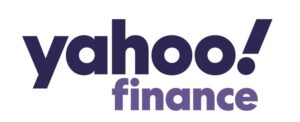By Danny McArthur
When University of Georgia student Kalah Mingo applied for her first credit card in 2016, she thought it was a straightforward offer.
Mingo, a fourth-year journalism major from LaGrange, Georgia, was enticed by the student offer from Bank of America: zero interest for the first year.
“I felt like it was a perfect time to start working on my credit score, so I said ‘yes’ and applied for it, and they approved me for it,” Mingo said.
She said she was surprised by how easy the process was. Her bank teller asked questions about her job and how much she made. While applying for her card, she was told how much she was required to pay and what her interest rate was.
“(I thought) if I make my payments on time, I’ll be fine so honestly, I wasn’t even listening that much,” Mingo said.
When she got her card, there was an incentive where she would get $100 credit if she spent $500 in the first three months. But that spending and more led her to miss the conditions of the zero interest. Now, she must pay off both her debt and interest.
“I do want to pay it off as soon as possible because it’s gotten [to] the point where I do have interest on it,” Mingo said.
While she said she does not have a specific timeline to pay it off, she wants to do so by her graduation in May. Her strategy for paying off her debt has involved budgeting. She has a job, and she said every time she is paid, she makes sure to pay part of her credit card debt first.
Matt Goren, who teaches personal finance in the UGA College of Family and Consumer Sciences, suggested students with credit card debt should budget and save to pay off credit card debt, which typically carries higher interest rates than other forms of debt. In his work as a financial advisor at a campus clinic, Goren may advise students to use part of their student loans to pay off credit card debts.
“The interest rate is a lot lower, so that is usually the preference there. Credit card debt can really spiral out of control in a short amount of time. Student loan debt is usually more of a slow burn,” Goren said.
For example, an unsubsidized student loan has a 6 percent interest in comparison to 23 percent interest for credit cards. He also advised paying credit card debt off within the 30 to 60-day period, since many cards allow for repayment of the debt without interest within that timeframe.
Mingo said deals such as one year with no interest might entice college students to get a credit card. Now her interest rate is 18.24 percent, and she said she wished she would have known more about it before she applied for a credit card.
Goren said a common thing he hears from college students is fear they can’t control their spending if they get a credit card. However, he said not getting a credit card in college could delay building a credit history that will be important later in adult life.
“It’s not the end of the world, but getting a credit card as a student … using it responsibly, [is] going to take the credit score off. That’s going to set them up in a really nice way long term,” Goren said.
Danny McArthur is a student at the University of Georgia.





